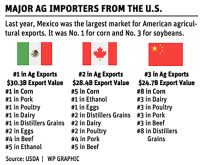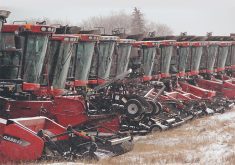SAN ANTONIO, Texas — Day one of the 2020 Commodity Classic conference kicked off with a market outlook calling for more of the same lacklustre grain and oilseed prices.
Bryce Knorr, senior grain market analyst for Farm Futures magazine, said the outlook is fundamentally bearish.
The U.S. Department of Agriculture is forecasting an average corn cash price of $3.60 per bushel in 2020-21, down from an estimated $3.85 in the current crop year.
Knorr is slightly more optimistic because world coarse grain supplies outside of China are on the decline. He thinks the average cash price will be closer to $3.75 per bu.
The USDA is forecasting an average soybean cash price of $8.80 per bu., up from an estimated $8.75 in 2019-20.
Knorr was again slightly more bullish, forecasting a $9 cash price, which means futures prices around the $10 per bu. mark. That will allow growers to cover their cash costs and some of their machinery expenses.
There is the potential for a weather rally because the main growing areas of the U.S. are wet and the forecast is for more wet weather in the spring.
Ed Usset, grain marketing economist with the Center for Farm Financial Management at the University of Minnesota, said growers are going to need to maximize their revenues by properly timing sales.
He has studied three decades of corn price data in Iowa and has reached a couple of conclusions.
A farmer who pre-sells 80 percent of their corn in four equal installments in March, April, May and June and the remaining 20 percent at harvest fares far better than the grower who sells everything at harvest.
Read Also

Farming Smarter receives financial boost from Alberta government for potato research
Farming Smarter near Lethbridge got a boost to its research equipment, thanks to the Alberta government’s increase in funding for research associations.
The pre-seller would have earned an average of 17 cents per bu. more than the harvest seller over the last 30 years.
When it comes to post-harvest marketing, it is best to store the crop but not for too long.
A grower who sells 20 percent of his corn at harvest and holds the rest until May would have earned an average of 19 cents per bu. more than the farmer who sold everything at harvest. That calculation includes storage costs.
Usset said the temptation is to hold the old crop corn until just prior to the new crop harvest. But the May seller would have generated an average of 41 cents per bushel more than the farmer who held the grain until July.
Jason Henderson, associate dean of Purdue Extension, believes the U.S. agriculture industry has made it through the downward commodity price spiral and is now entering a prolonged plateau period reminiscent of the 1990s.
That means more tight margins ahead. Farmers are going to have to limit their capital expenditures but Henderson advised against holding back on land improvements.
Fred Seamon, executive director of commodity research and product development at CME Group, said there are opportunities for farmers in on-farm storage.
He said the U.S. has evolved from being the primary supplier of grains and oilseeds to the world to being the residual supplier.
“What that can mean for us is more storage markets and that is an opportunity for farmers who have on-farm storage,” said Seamon.
There will increasingly be times where futures markets will be rewarding farmers for carrying their grain.
A number of U.S. commodity groups held press conferences during the first day of the event.
Bill Gordon, president of the American Soybean Association, said there is a lot more to the Phase One trade agreement between the U.S. and China than increased sales of U.S. agricultural commodities.
The soybean industry is more excited about China’s commitment to a two-year approval process for biotech traits.
“There’s teeth in there to hold them to that. That will be huge for agriculture and huge for U.S. soybean farmers,” said Gordon.
Contact sean.pratt@producer.com


















